The Problem With Pentatonic Scale Shapes
Memorizing pentatonic boxes is boring.
Most guitar players quit before learning all of them. And those who do manage to learn them usually have trouble moving freely on the guitar fretboard.
It becomes even more difficult when you try to add 3 notes per string pentatonic scales to your soloing toolbox, because then you have to memorize even more boxes 😬.
That's why I usually recommend against trying to memorize these pentatonic scale shapes, and use the String Fragment System instead.
The result is the same. You end up in the same scale positions, but you get there through a fun and intuitive system.
However, looking at the scale shapes is useful for explaining some things. That's why in this lesson I'm including all pentatonic boxes, both for 2nps and 3nps pentatonic scales.
But don't try to memorize all of them. Instead learn the String Fragment System which will allow you to learn all kinds of scales much quicker.
Video: 2NPS / 3NPS Pentatonics
2 Notes Per String Pentatonic Boxes
The first system we will look at is the classic 2NPS system, which as the name suggests, produces fingerings with 2 notes on each string.
Five of these fingerings cover the whole fretboard and then repeat again for the higher octaves.
Here they are in the key of F minor or Ab major, however you call it, depending on the harmonic context (F minor and Ab major share the same notes, they are “relative scales”).
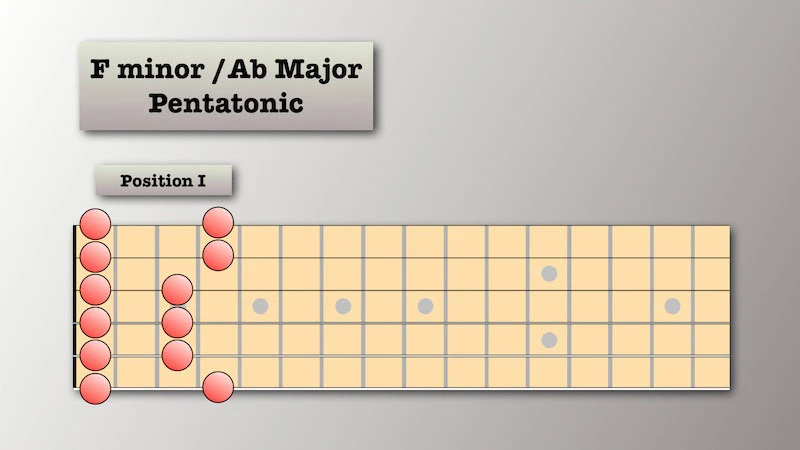
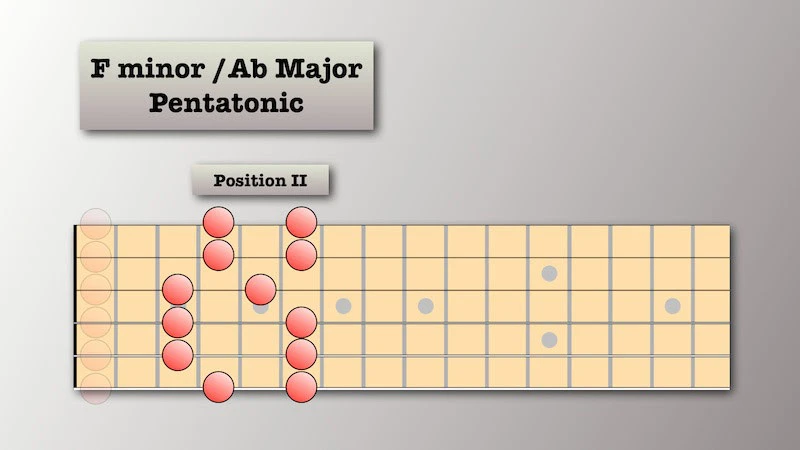
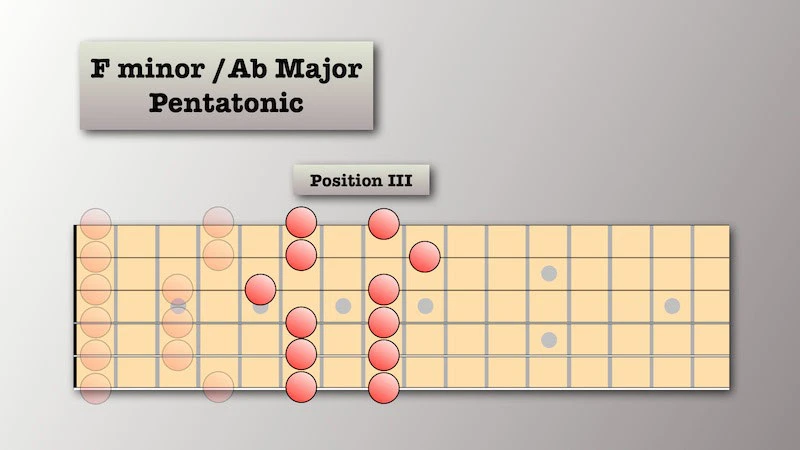
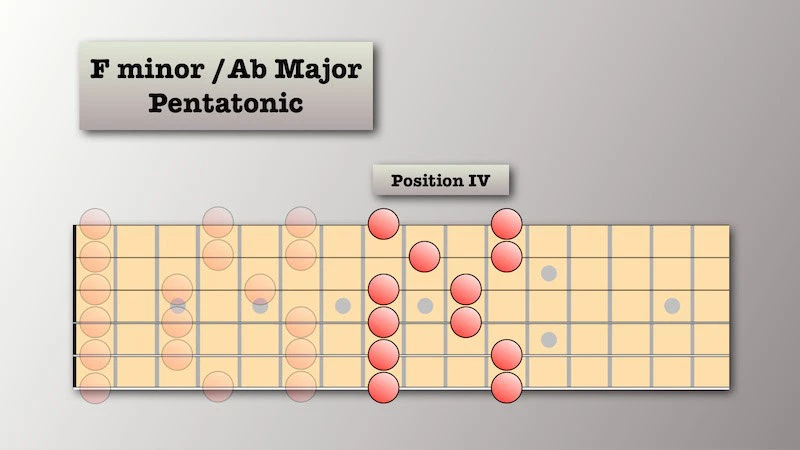
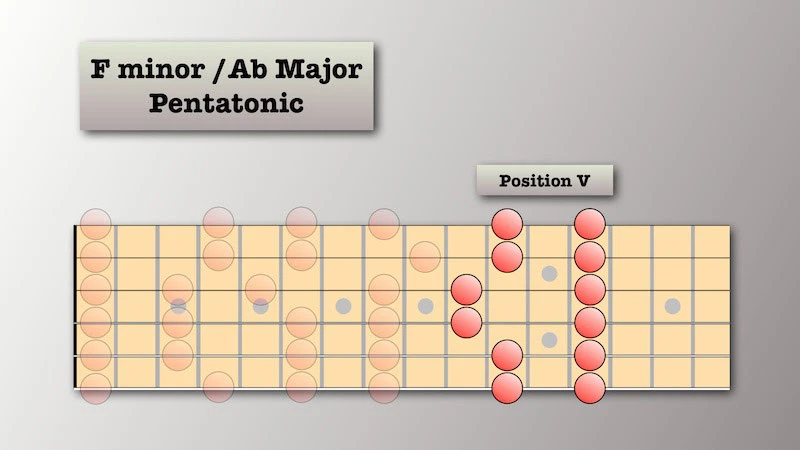
3 Notes Per String Pentatonic Boxes
Let’s now look at 3NPS Pentatonic shapes. Each one of these can be seen as a combination of 2 adjacent 2NPS shapes.
As before, we use 5 of these to cover every possible position on the fretboard, just with more overlap. Here they are, again in the key of F minor or Ab major.
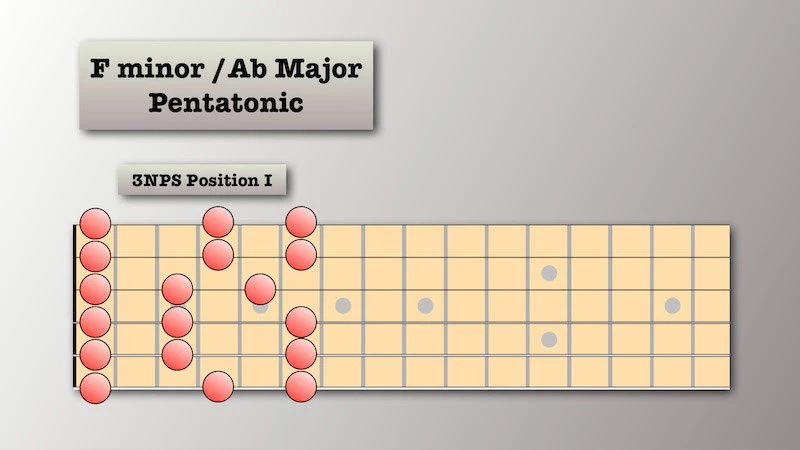

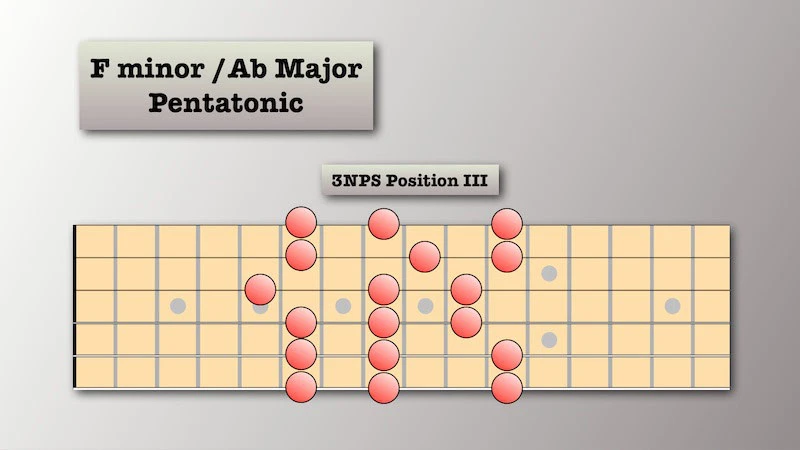
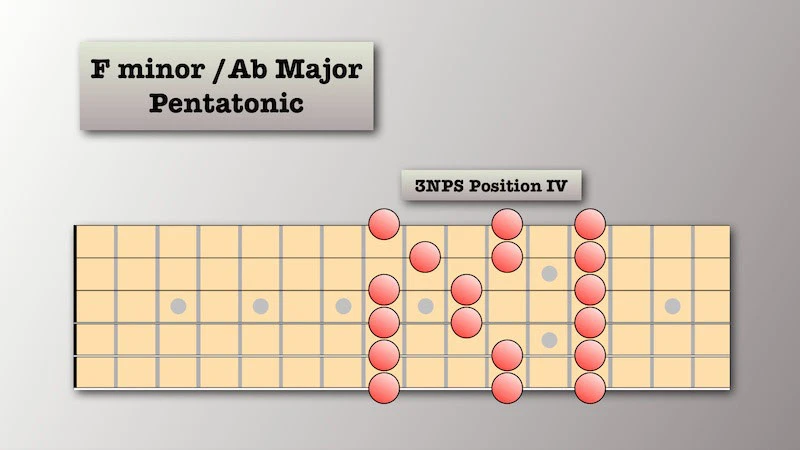

You probably noticed a few strange things about these.
First of all, they require some serious stretching in the left hand, which can be demanding or even impossible if you are a beginner.
On the other hand though, having 3NPS available opens up different picking options in the right hand, it makes some kinds of phrases much easier, and allows you to explore phrasing choices that you never would using 2NPS.
Another thing that you probably noticed, is that the last note on each string is the same as the first one on the next. Having two options for the same note can be confusing in the beginning, but it opens up new technical and phrasing possibilities.
For example, players that tend to use sweeping or as its also called, economy picking, often alternate between using 3 notes on a string and just 1 on another. This covers all the notes of the scale, but the 313 configuration allows for smooth sweeping on every string change.
In the video you can hear another example: Something that I like to do with this, is to totally disregard the fact that there is a repeated note, and use phrasing that I would in a regular 7 note scale. This produces a sound that I think is really cool.
To summarize, 3NPS pentatonics is a fingering system that allows a great degree of sophistication and experimentation, if you are willing to spend some time with it.
Easy Way To Learn All Pentatonic Boxes
The traditional way for learning pentatonics, or any scales for that matter, is to just try to memorize all these shapes. This approach can work well for very few people, but in my years of learning and teaching (I have been teaching professionally since 2001), I have found that it’s not the best approach.
Most guitar players that try to simply memorize, just end up remembering one or two of these, and have trouble using them comfortably in all keys. Even those who do use all 5 fingerings, they usually have to climb up from one fingering to the next, not being able to freely jump wherever they feel like on the fretboard.
Well, I happen to have a solution for this, and it’s called SFS, or the "String Fragment System”, which I have been teaching to my students since 2010 with great results. This is an approach based on understanding the structure of a scale and mapping it intelligently everywhere on the fretboard.
Once you learn how it works, and get used to it, you can then apply it to learn any kind of scale even faster. I usually start my students with pentatonics and then move to the modes of the major scale, the modes of melodic and harmonic minor, symmetric scales, etc. What happens is that they become faster at learning every new scale, because the skills for using SFS are already there.
You can even apply this system to 4,5,6 string bass, 7 string guitar or actually whatever stringed instrument. If you are interested to learn more about SFS, check out SFS Fretboard Secrets.